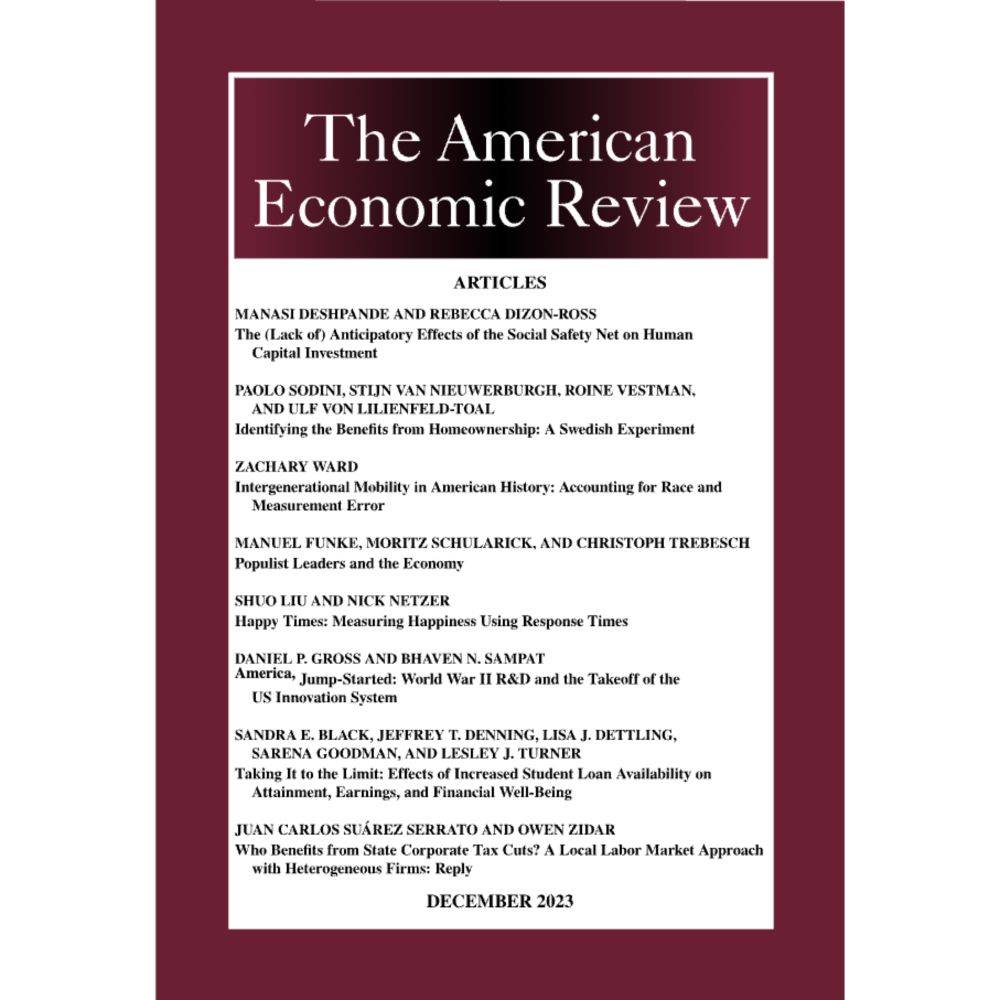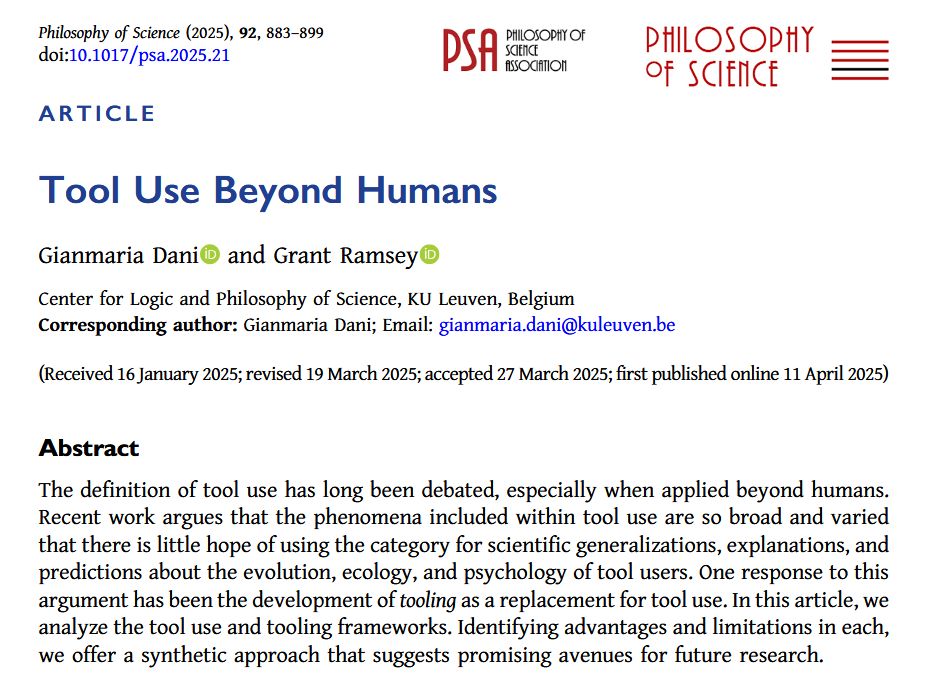
New edition: 'Sense & Nonsense: Evolutionary Perspectives on Human Behaviour' (https://tinyurl.com/yfv2kc27)
Lab: https://gillianbrown.wp.st-andrews.ac.uk

@science.org #ehbea #histbiol #evobio #psyscisky
Revisiting the human sociobiology debate |Science www.science.org/doi/10.1126/...
Free to read: rdcu.be/eRKbv

Free to read: rdcu.be/eRKbv
"We also find that the 3 intervention curricula are highly effective across sociodemographic group characteristics [...] we offer evidence-based strategies for curriculum development"
"We also find that the 3 intervention curricula are highly effective across sociodemographic group characteristics [...] we offer evidence-based strategies for curriculum development"

The publisher is allowing 50 free eprints, so grab your copy while you can!
www.tandfonline.com/eprint/FVSSQ...
The publisher is allowing 50 free eprints, so grab your copy while you can!
www.tandfonline.com/eprint/FVSSQ...
authors.elsevier.com/a/1m7%7E93QW...

authors.elsevier.com/a/1m7%7E93QW...
Why do males and females so often age and die at different rates?
We argue that sex-specific mutation accumulation may be the most parsimonious evolutionary explanation for sex-biased ageing:
ecoevorxiv.org/repository/v...
Why do males and females so often age and die at different rates?
We argue that sex-specific mutation accumulation may be the most parsimonious evolutionary explanation for sex-biased ageing:
ecoevorxiv.org/repository/v...
"Models casting egalitarian societies as crucibles of equality perpetuate the factually uninformed notion that foragers are somehow more noble. Critiques portray egalitarianism as romantic fantasy. Neither characterization is wholly justified."
doi.org/10.1017/S014...
"Models casting egalitarian societies as crucibles of equality perpetuate the factually uninformed notion that foragers are somehow more noble. Critiques portray egalitarianism as romantic fantasy. Neither characterization is wholly justified."
doi.org/10.1017/S014...
academic.oup.com/jeb/advance-...
#Image #GoogleGemini @jevbio.bsky.social #OA

academic.oup.com/jeb/advance-...
#Image #GoogleGemini @jevbio.bsky.social #OA
www.journals.uchicago.edu/doi/10.1086/...

www.journals.uchicago.edu/doi/10.1086/...

Scientists are examining tool use, a technically challenging activity, to learn how ageing affects our close relatives, chimpanzees, something we know very little about.
buff.ly/Tzuw7q2
Scientists are examining tool use, a technically challenging activity, to learn how ageing affects our close relatives, chimpanzees, something we know very little about.
buff.ly/Tzuw7q2
We carried out focus groups and detailed interviews with a whopping 172 women and men about their perceptions of men who support women's empowerment... 📝 1/5

We carried out focus groups and detailed interviews with a whopping 172 women and men about their perceptions of men who support women's empowerment... 📝 1/5
Contributions by (1) Irina Mikhalevich; (2) Eva Jablonka and Simona Ginsburg; (3) Nicholas Humphrey; (cont'd)

Contributions by (1) Irina Mikhalevich; (2) Eva Jablonka and Simona Ginsburg; (3) Nicholas Humphrey; (cont'd)
As a part of this paper, we also created the Transparent Statistical Reporting in Psychology checklist, which researchers can use to improve their statistical reporting practices
www.nature.com/articles/s44...

As a part of this paper, we also created the Transparent Statistical Reporting in Psychology checklist, which researchers can use to improve their statistical reporting practices
www.nature.com/articles/s44...
E.g., p = .056 is “marginally significant” or “close to being significant”
🔹 Most p-excuses are used in psychology.
🔹 The least p-excuses are used in health.
Preprint: osf.io/preprints/me...
#MetaSci #AcademicSky 🧪

E.g., p = .056 is “marginally significant” or “close to being significant”
🔹 Most p-excuses are used in psychology.
🔹 The least p-excuses are used in health.
Preprint: osf.io/preprints/me...
#MetaSci #AcademicSky 🧪
link.springer.com/article/10.1...

link.springer.com/article/10.1...
www.sciencedirect.com/science/arti...
Association between lactase persistence and height in the past (indicating people with the persistence allele were better nourished by drinking milk than those without it) provides a potential explanation for why it was under strong selection.
www.sciencedirect.com/science/arti...
Association between lactase persistence and height in the past (indicating people with the persistence allele were better nourished by drinking milk than those without it) provides a potential explanation for why it was under strong selection.

*Differences in potential ratings account for half of the gender promotion gap
*Women’s lower potential ratings do not reflect future performance: women subsequently outperform male colleagues

*Differences in potential ratings account for half of the gender promotion gap
*Women’s lower potential ratings do not reflect future performance: women subsequently outperform male colleagues
-in American Naturalist by @stuwest.bsky.social, @annadewar.bsky.social, @ryosukeiritani.bsky.social, Laurence Belcher, and @asgriffin.bsky.social
www.journals.uchicago.edu/doi/abs/10.1...

-in American Naturalist by @stuwest.bsky.social, @annadewar.bsky.social, @ryosukeiritani.bsky.social, Laurence Belcher, and @asgriffin.bsky.social
www.journals.uchicago.edu/doi/abs/10.1...


